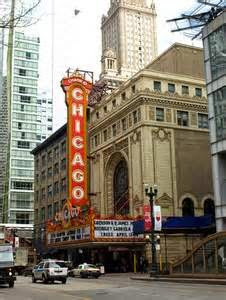 |
| Most People Don't Save Enough (click to enlarge) |
Different generations sport a completely different set of priorities with the younger generation concerned about getting help starting out, paying on their student loans, raising children, and in finding a nice place to live. Those nearing retirement, the so-called, "baby boomers" and older Americans that have already retired or are looking forward to kicking back, often with little in the way of savings this group wants to know the government will be there to help make them comfortable and take care of them in coming years. The myth that funds have been set aside to provide for the social security payments and the medical needs of older Americans will soon be laid bare and the bill for such things is about to be laid at the feet of today's youth. Call them what you want but Generation X, the Millennials and their younger "Generation Z" counterparts are in for a rude awakening when handed the bill for all that has been promised.
The siblings of “Generation Z” owe a great deal of their generational identity to Generation X. Born between 1960 and 1980 in the United States the Generation X is now between the ages of 34 and 54 years old. These are the people who laid the political, intellectual, social, creative and personal ground upon which the youth of today walk, talk and text. Sadly. they also did little to promote an environment of political reality by halting baby boomers from leveraging their clout into favorable policy that they will enjoy in later life. In fact, in the 1980s our government slashed tax rates to revitalize the flagging economy just as boomers approached their prime earning years. The average federal tax rate for a median American household, including income and payroll taxes, dropped from more than 18% in 1981 to just over 11% in 2011.
 |
| The Sad Truth Is Many Older Americans Are Broke! |
For over 35 years, the Administration on Aging (AOA) has provided home and community-based services to millions of older persons through the programs funded under the Older Americans Act (OAA). These include but are not limited to transportation, adult day care, caregiver supports, and health promotion programs. The Office of Nutrition and Health Promotion Programs manages health, prevention, and wellness programs for older adults. This includes behavioral health information, chronic disease self-management education programs; diabetes self-management, disease prevention, and health promotion services ( “Title IIID”), falls prevention programs; HIV/AIDS education, nutrition services, and oral health promotion. All this cost money and this is only the tip of the iceberg when it comes to money being thrown at making the lives of older Americans better.
 |
| The Number Of Older Americans Is Growing |
It is predicted that as people age the cost of caring for them will dramatically increase and this will create real problems for our budget. Sadly, the arithmetic leaves few ways out of the mess, the numbers are ugly and much of it is only now becoming visible in our soaring National Debt. Faster growth would help, but the debt left by the boomers adds to the drag of slower labor-force growth. Carmen Reinhart and Kenneth Rogoff, two Harvard economists, estimate that public debt above 90% of GDP can reduce average growth rates by more than 1%. Meanwhile, the boomer era has seen falling levels of public investment in America. Annual spending on infrastructure as a share of GDP dropped from more than 3% in the early 1960s to roughly 1% in 2007.
Austerity is another option, but the consolidation needed would be large. A report from the IMF estimates that fixing America’s fiscal imbalance would require a 35% cut in all transfer payments and a 35% rise in all taxes. This is clearly too big a pill for our creaky political system to swallow. Fiscal imbalances rise with the share of the population over 65 growing and with partisan gridlock, this is troubling news for America, where the over-65 share of the voting-age population will rise from 17% now to 26% in 2030. As this voting block grows and strengthens it is unlikely they will loosen the noose.
This leaves the third possibility: inflation. A few years of 5% price rises could help households reduce their debts faster. Other economists, including two members of the Federal Reserve’s policy-making committee, now argue that with interest rates near zero, the Fed should tolerate a higher rate of inflation and try to speed up recovery. The generational divide makes this plan a hard sell. Younger workers are typically debtors, who benefit from inflation reducing real interest rates, older people with large savings dislike it for the same reason. A paper by the Federal Reserve Bank of St Louis suggests that as a country ages, its tolerance for inflation falls.
At a time when robots and automation are eliminating jobs, it could be argued that younger people are facing a difficult labor market when it comes to wages. This means that people are having to price themselves into jobs and that there continues to be a cut in the "real value" of pay as inflation remains higher than pay increases. Youth unemployment is weak, many jobs are only part-time, and workforce participation has dropped. In 2013 the Congressional Budget Office reviewed the implications of providing long-term services and support for older Americans, while the Pew Research Center looked at trends in caregiving, with an emphasis on the “sandwich generation” that is assisting both older children and aging parents. After a review of these reports, it is easy to arrive at the conclusion that the squeeze is just beginning.














